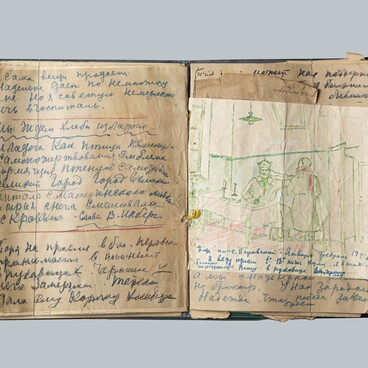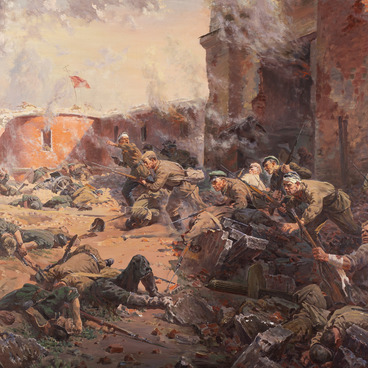In Nazi concentration camps, special triangle badges were used to identify the reason the prisoners had been placed there. They were made of fabric and sewn onto the prisoner uniforms. In German, such a badge was named a “Winkel” — from the word meaning “angle”, for “triangle”. Every prisoner had a triangle badge in addition to an inmate number.
The universal identification system appeared in 1938, and from that time on, similar badges were used in all Nazi camps. They were part of a system of prisoner identification and social stigmatization in the form of branding. Such emblems helped guards to supervise the inmates.
By looking at the badges, the guards could identify the country of origin, race, and charges against the prisoners. In some camps, the inmate number was marked only on the badge, but in others, including Auschwitz, it was also tattooed on the skin.
The badge could indicate the reason why the inmate had been placed in the camp. For example, an inverted red triangle designated political prisoners: communists, liberals, anarchists, social democrats, and Freemasons. A black triangle indicated mentally ill and “mentally disabled”, alcoholics, beggars, and vagrants. The green triangle was used for convicts and criminals.
There were also pink, blue, purple, and brown triangles. The letter designated nationality: B for Belgians, F for French, I for Italians, P for Poles, and SU for Soviet prisoners of war. Jews were marked with two superimposed triangles forming a Star of David. The lower one was yellow and the upper one indicated the crime. Repeat offenders received an additional stripe at the top.
Sachsenhausen was one of the first concentration camps to be established in Germany. It played a special role as one of the camps created for preparing camp personnel. The main directorate for concentration camps was established in Sachsenhausen in 1938, as well as a training center for camp guards. Prisoners were employed by factories, including the Oranienburg ironworks located near the camp, and aircraft factories.
The museum collection houses three badges of Sachsenhausen inmates. All of them feature inverted red triangles with the letter P, meaning that they belonged to three political prisoners from Poland.
The universal identification system appeared in 1938, and from that time on, similar badges were used in all Nazi camps. They were part of a system of prisoner identification and social stigmatization in the form of branding. Such emblems helped guards to supervise the inmates.
By looking at the badges, the guards could identify the country of origin, race, and charges against the prisoners. In some camps, the inmate number was marked only on the badge, but in others, including Auschwitz, it was also tattooed on the skin.
The badge could indicate the reason why the inmate had been placed in the camp. For example, an inverted red triangle designated political prisoners: communists, liberals, anarchists, social democrats, and Freemasons. A black triangle indicated mentally ill and “mentally disabled”, alcoholics, beggars, and vagrants. The green triangle was used for convicts and criminals.
There were also pink, blue, purple, and brown triangles. The letter designated nationality: B for Belgians, F for French, I for Italians, P for Poles, and SU for Soviet prisoners of war. Jews were marked with two superimposed triangles forming a Star of David. The lower one was yellow and the upper one indicated the crime. Repeat offenders received an additional stripe at the top.
Sachsenhausen was one of the first concentration camps to be established in Germany. It played a special role as one of the camps created for preparing camp personnel. The main directorate for concentration camps was established in Sachsenhausen in 1938, as well as a training center for camp guards. Prisoners were employed by factories, including the Oranienburg ironworks located near the camp, and aircraft factories.
The museum collection houses three badges of Sachsenhausen inmates. All of them feature inverted red triangles with the letter P, meaning that they belonged to three political prisoners from Poland.


